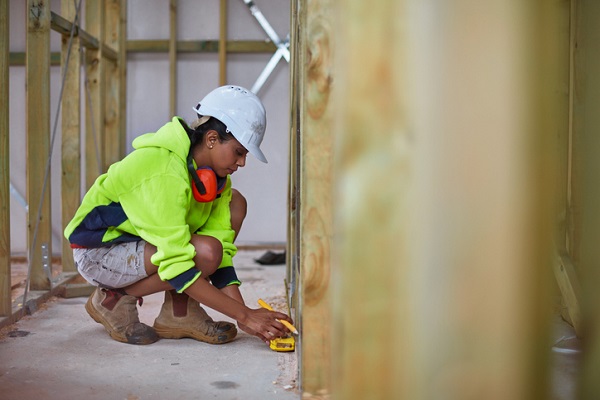Australia’s construction industry has second largest pay gap – and it’s widening

August 31, is Equal Pay Day, a date representing the additional 61 days a female must work to earn the same amount as a male colleague according to the National Association of Women In Construction (NAWIC). This is three more days than last year.
For women in Australia’s construction industry, however, the gap is much wider, the second-highest in Australia in fact, at 26.1%, with women earning on average $36,361 p.a less according to the ABS.
“While we recognise Equal Pay Day on 31 August this year, for many women working in construction, we must work at least another month more before we catch up with our male colleagues,” NAWIC national chair Kristine Scheul says.
Like the national pay gap, the gap in construction is also widening – up 1% from the year before.
So, what is it about the construction industry that causes it to have the second highest ranking gender pay gap and for that trend to go backwards instead of forwards?
Firstly, it is important to recognise that the gender pay gap is not the same as equal pay. Equal pay for equal work was enshrined in the Fair Work Act 2009 making it illegal to not provide equal pay to employees performing work of equal or comparable value. The gender pay gap is not just about equal wages, it measures women’s economic position compared with that of men or more to the point, it measures the impact of both conscious and unconscious gender discrimination in the workforce.
For the construction industry, therefore, some reasons for the gap include discrimination in hiring, starting salaries, promotions and pay rises; undervaluing women’s competencies; the motherhood penalty impacting career progression and lack of workplace flexibility to accommodate caring and other responsibilities.
“It is little wonder that the industry is finding it challenging to recruit women and even if they do, having them stay. Why would women want to stay in an industry where it appears they are not valued as highly as their male colleagues?”
“Through the development of our strategic plan, NAWIC is seeking to break down why our industry is finding it so difficult to increase the number of women participating in the industry and then assist women and industry to resolve those issues holding them back. We recognise that in most instances, the discrimination experienced by women is not intentional but equally, not actively seeking to do something about it has the same effect,” Kristine says.
“This is why NAWIC calls on the construction industry to ask #WhatsYourPayGap and examine how they can start affecting the change within their own organisations.”
On 17 September, NAWIC will present their inaugural forum hosted by the ABC’s Bright Ideas Program. With it, NAWIC hopes to start the conversation about what change needs to take place.
“Recognising that there is an issue in the construction industry is one thing, actively working out what to do about it is another. Through the forum’s discussion, we want to identify what the specific barriers are to the construction industry becoming one where women get to fully participate and achieve recognition of their value,” says Kristine.
“We want to see a change in the WGEA scorecard on the gender pay gap. At the very least, it will be a positive step towards achieving our goal of 25% women in construction by 2025.”
